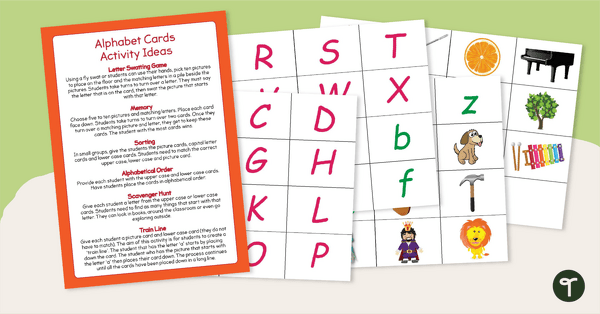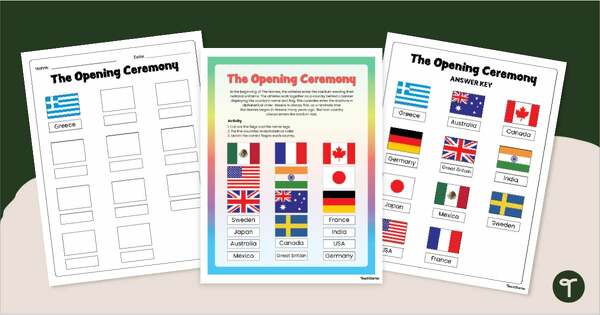Alphabetical Order Teaching Resources
Teach alphabetical order this school year with printable worksheets, engaging rotation activities and games, and digital and printable resources to help students understand ABC order!
This collection of teacher resources is aligned with the Australian Curriculum, and a teacher has created each resource for your primary classroom and lesson plans.
Best of all, every game, poster, worksheet and activity has been carefully reviewed by a member of our expert teaching team to ensure every resource is classroom-ready — so we can make your lesson planning easier. Explore the whole alphabetising collection for fresh ideas for your classroom!
New to teaching alphabetical order, or just looking for new ways to engage your students? Read on for a primer from our teacher team!
What Is Alphabetical Order? A Kid-Friendly Definition
As teachers, we know that alphabetical order — sometimes called ABC order — is a way of arranging words or phrases based on the sequence of letters in the alphabet. But how do we explain what it means to alphabetise to our students?
Here's a definition that puts ordering letters in terms that an early years student might understand by relating it to their toys.
Alphabetical order is like putting your toys away in a straight line from A to Z, just like the ABCs. It means arranging things — like the names of all of the students in your class — in order from the first letter to the last letter of the alphabet.
For example, if we wanted to create a list of different fruits in alphabetical order, 'apple' comes before 'banana' because 'a' comes before 'b' in the alphabet.
In alphabetical order, words can be arranged from A to Z or in reverse alphabetical order, from Z to A.
Why Is Alphabetical Order Important?
We start teaching our students to order things from A to Z in the early years of primary school when children are learning the alphabet. It is usually introduced in foundation or prep as students learn the names and order of the letters of the alphabet. From there, students are gradually introduced to alphabetical order and how to use it in various contexts.
The reason for this is simple — it's an essential skill for reading and writing. It's also a fundamental concept our students will need to develop advanced literacy skills, such as dictionary use and vocabulary acquisition.
Still, the real importance of alphabetical order lies in its ability to provide a systematic and efficient way of organising information. When things are listed in A to Z order, information is easily retrieved from lists, tables, charts and other reference materials.
Why Is the Alphabet in That Order?
Has a student asked you why the 26 letters of the alphabet are ordered the way they are? It's a great question!
The order of what is often called the 'modern Latin alphabet' traces back thousands of years as the English language developed. Our English alphabet, ordered from A to Z, is based on the ancient Latin alphabet.
The Latin version had just 22 letters, and it didn't have vowels. Those were added by the Greeks and later the Romans to form the alphabetical order we know and use today!
How Do You Teach Alphabetical Order?
This collection of teaching resources is full of printables and ideas for teaching alphabetical order, from playing games to fun sorting activities, but we didn't stop there.
Here are some favourites alphabetical order activities from our teaching team!
- Alphabetical Order Song — The alphabet song has been used for generations, and this mnemonic will never go out of style! Using catchy songs is a great way to help students retain information.
- Alphabet 'War' — Switch out playing cards with flashcards featuring different letters for a game of alphabet war. In this version of the popular game, students who throw out a card with a letter closer to the start of the alphabet are the 'winners' of each round. You can make this game more challenging by supplying flashcards that feature only a picture, challenging students to remember the name and letter it starts with.
- Use Zippered Freezer Bags — Print out one of our ABC order worksheets and slip them inside gallon-sized freezer bags with a zipper slider at the top. Then, use a marker to write the letters of the alphabet across the top of the bag. Students can slide the zipper to each letter to find it in the alphabet as they fill out their worksheet. Bonus: This will allow you to reuse your printed sheet!
- Free Plan

Dot-to-Dot Alphabet Worksheets
Use this set of 3 dot-to-dot worksheets to get your youngest students practising their recognition of the alphabet.
- Free Plan

Alphabetical Order Task Cards – Set 1
A set of 11 task cards alphabetising a series of words to the first letter.
- Plus Plan

Alphabet Picture and Letter Cards
Practise letter recognition and letter sounds with this set of alphabet letter and picture cards.
- Plus Plan

The Opening Ceremony - ABC Order Sequencing Activity
Practise ABC order skills with a printable Olympic Games Opening Ceremony cut-and-paste worksheet.
- Free Plan

Remembrance Day Vocabulary - Alphabetical Order Worksheet
Support your students in reviewing the vocabulary and concepts surrounding the Remembrance Day holiday with an alphabetical order worksheet.
- Plus Plan

Easter Worksheets - Grammar Practise
Practise skills learnt in literacy with this Easter-themed grammar activity pack.
- Plus Plan

Valentine's Day Grammar Worksheets
Review and practise a wide range of grammar skills with a pack of printable Valentine’s Day Grammar Worksheets.
- Plus Plan

Alphabetical Order to the 3rd Letter - Interactive Activity
Practice alphabetising to the third letter with this interactive digital learning activity.
- Plus Plan

Alphabetical Order Task Cards – Set 3
A set of 11 task cards alphabetising a series of words to the third letter.
- Plus Plan

Alphabetical Order Task Cards – Set 2
A set of 11 task cards alphabetising a series of words to the first and second letters.
- Plus Plan

Alphabetise the Aquarium Activity
A set of 4 mats for students to practise alphabetising.
- Plus Plan

Alphabetical Order Worksheet for Year 2
This year 2 worksheet explains alphabetical order and allows students to demonstrate.
- Plus Plan

Alphabetical Order Poster
A poster explaining how to order words according to their place in the alphabet.
- Plus Plan

Alphabetical Order Icosahedron
An engaging way for your students to consolidate their understanding of alphabetical order.
- Plus Plan

Alphabetical Order Dominoes
A set of dominoes to consolidate students' understanding of alphabetical order.
- Plus Plan

Alphabet Order Activity
A fun match-up activity to help teach children the alphabet, letters and sounds.
- Plus Plan

Alphabet Ordering Puzzles
A fun and engaging set of alphabet puzzles.
-

Tips and Activities for Teaching Letters and Sounds
The introduction of single letter names and sounds is crucial in the early years classroom. Here are some hints and tips, including some fun hands-on classroom resources.